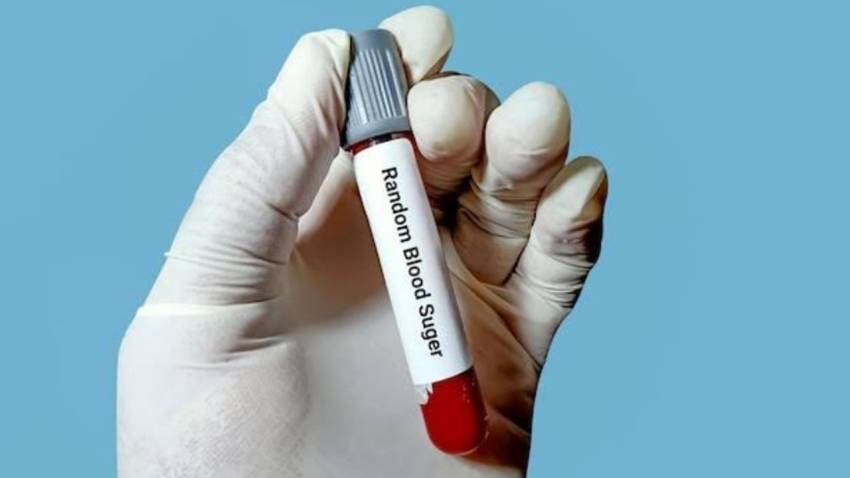Managing Blood Sugar Fluctuations: How RBS Testing Helps in Diabetes Care?

New Delhi : Recognising the significance of RBS testing empowers both doctors and individuals with diabetes to work together in attaining optimal glucose control and improving overall well-being.
Diabetes presents as a persistent medical condition marked by heightened levels of glucose in the bloodstream, posing risks of complications if not effectively controlled. An essential component in the diagnosis and management of diabetes is glucose testing. Among the array of methods available, Random Blood Sugar (RBS) testing stands out for its pivotal role in gauging an individual's current blood sugar levels. So, read on to learn about the role of an RBS test in diagnosing diabetes and its contribution to the effective management of this widespread health issue.
What is an RBS Test?
A random blood sugar test involves measuring the blood sugar level at any given time or randomly during the day. In contrast to fasting blood sugar tests which necessitate abstaining from eating for a specific duration, an RBS test offers insight into glucose levels irrespective of the time of day or recent food consumption. This examination assists a doctor in determining if further testing is necessary. As an elevated random blood glucose reading may suggest diabetes, it warrants follow-up confirmatory tests.
How Does an RBS Test Help in Diabetes Care?
An RBS test plays a crucial role in screening for managing diabetes. Here’s how:
● Immediate Glucose Level Assessment
An RBS test is invaluable as it promptly assesses an individual's blood sugar levels. This is particularly beneficial during emergencies, such as when someone displays symptoms of high blood sugar (hyperglycaemia), like frequent urination, excessive thirst, and unexplained weight loss. RBS testing enables doctors to swiftly determine if high blood sugar is a contributing factor.
● Diabetes Screening
An RBS test serves as a screening tool for diabetes. While oral glucose tolerance and fasting blood sugar tests offer comprehensive assessments, RBS testing is convenient and quickly identifies individuals with elevated blood sugar levels, prompting further diagnostic tests. It serves as an initial indicator of potential diabetes, aiding doctors in making informed decisions about additional testing and interventions.
● Monitoring Fluctuations in Glucose Levels
For diagnosed diabetes patients, an RBS test is essential for monitoring glucose fluctuations throughout the day. This information helps doctors adjust treatment plans, including dietary recommendations and medication dosages, to maintain optimal blood sugar control. Regular RBS testing is integral to diabetes management, allowing personalised care based on individual glucose patterns.
● Prompt Intervention and Treatment Modification
Early detection of abnormal blood sugar levels through an RBS test allows for prompt intervention and adjustment of treatment plans. Whether it involves adjusting oral medications, administering insulin, or making lifestyle recommendations, timely information from RBS testing enables doctors to tailor interventions to the individual's immediate needs, averting potential complications.
● Empowerment of the Patients
An RBS test empowers individuals with diabetes to actively engage in their own care. Regular monitoring fosters an understanding of how lifestyle factors, such as physical activity and diet, impact blood sugar levels. This awareness enables individuals to make informed choices contributing to better glucose control, resulting in better overall health and reduced risk of developing long-term diabetes-related complications.
RBS Test Results
An RBS test is a useful tool for monitoring blood glucose levels, which can fluctuate before and after meals. If the RBS test is conducted within one or two hours after eating, a normal value should be around 180 mg/dl. Prior to eating, the normal range for RBS should ideally fall between 80 mg/dl and 130 mg/dl for healthy blood sugar levels. A reading between 140 mg/dl and 199 mg/dl indicates pre-diabetes, increasing the risk of developing type 2 diabetes. Meanwhile, a reading of 200 mg/dl and above suggests probable diabetes.
All in all, in the field of diabetes diagnosis and management, an RBS test holds significant importance by promptly offering insights into an individual's blood glucose levels. Whether it's screening for diabetes or monitoring fluctuations in cases where diabetes has already been diagnosed, RBS testing facilitates swift intervention and personalised treatment strategies.








